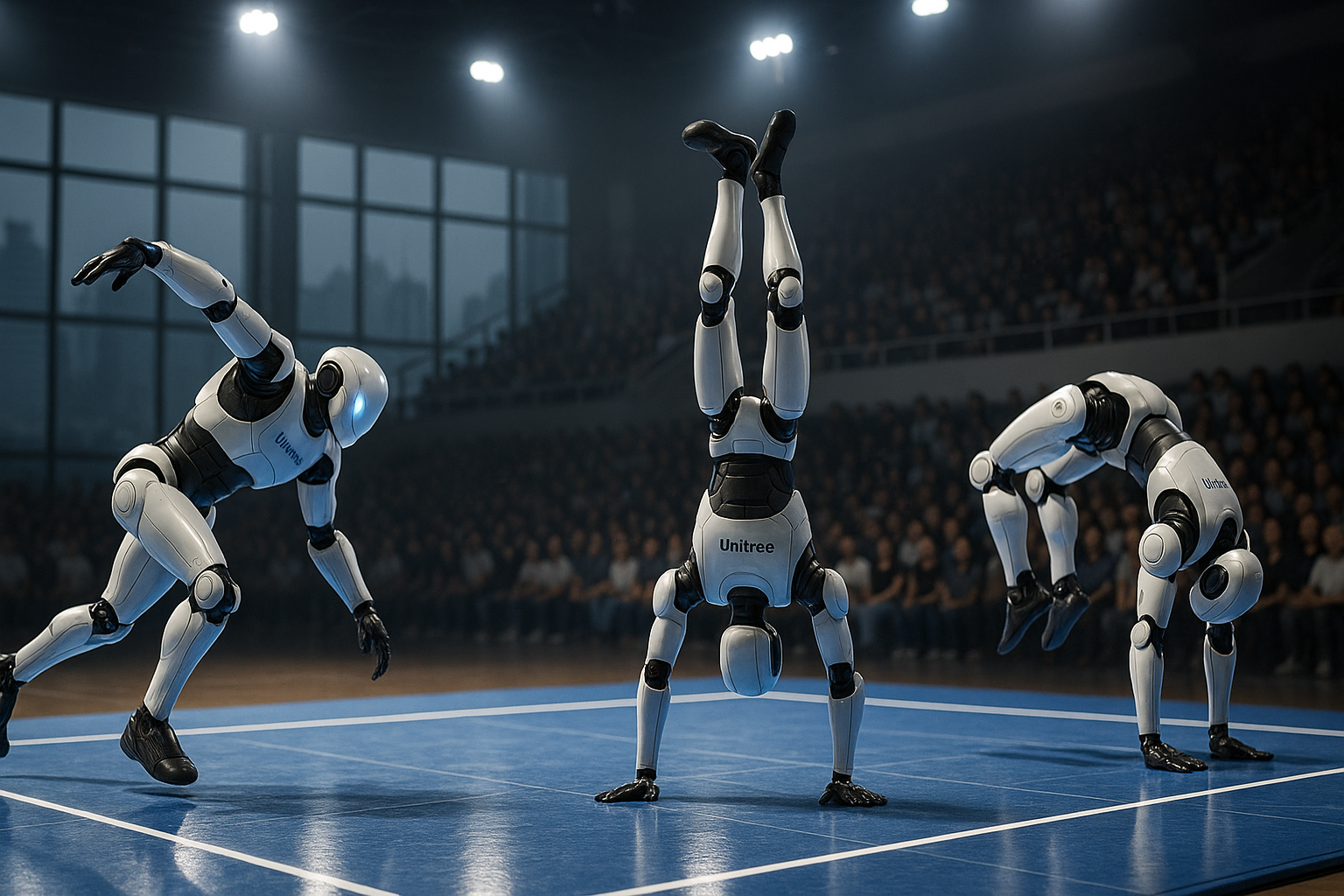In what might be the most spectacular glimpse yet of our mechanized future, Chinese firm Unitree has been strutting its robotic stuff at the inaugural "World Humanoid Robot Games" in China. Their bipedal machines—direct rivals to Tesla's much-hyped Optimus—put on a show that left spectators both impressed and, perhaps, a little existentially troubled.
I've been tracking the humanoid robot race since 2021, and this demonstration marks a significant acceleration of capabilities that few industry observers anticipated happening so quickly.
The star of the show? Unitree's H1 humanoid robot, priced at $90,000—a figure that suddenly doesn't seem so outrageous when you see what these things can do. Video footage captured the machine executing gymnastic routines that would make Olympic medalists take notice: backflips, handstands, and acrobatic maneuvers performed with eerie precision. No sweating. No nervousness. Just cold, calculated perfection.
The timing couldn't be more interesting.
While Elon Musk continues making grand proclamations about Tesla's Optimus eventually becoming "worth more than the car business," companies like Unitree are actually putting functional robots through public demonstrations. Actions over words, as they say.
Look, what's particularly jarring here isn't just the capabilities themselves, but the acceleration curve. Remember those viral videos from just a few years back? The ones where robots comically face-planted attempting basic movements? That era feels like ancient history now. The progression from "cute robot fails" to "terrifyingly competent mechanical athletes" happened with whiplash-inducing speed.
The economics here present a fascinating inflection point. At $90k, these machines cost roughly what a mid-level knowledge worker earns annually in developed economies. But—and this is the kicker—robots don't request raises, take vacations, or spend two hours of their workday crafting the perfect response to an email that could have been three sentences.
Several industry analysts I spoke with confirmed the math becomes rather compelling when considering long-term labor costs.
This development forces us to reconsider fundamental assumptions about automation's limits. The conventional wisdom has long been that robots would primarily replace routine, repetitive tasks. But when machines can perform feats requiring balance, coordination, and spatial awareness... well, the boundaries blur considerably, don't they?
For investors trying to navigate this landscape, the humanoid robot space represents both tantalizing opportunity and maddening uncertainty. Which application becomes economically viable first? Warehousing? Elder care? Construction? Or something we haven't even considered yet?
The geopolitical dimension shouldn't be overlooked, either. While American companies like Tesla dominate headlines (Musk has a talent for that, if nothing else), Chinese firms like Unitree are demonstrating impressive capabilities backed by strategic national investment. This pattern—American media dominance versus Chinese execution—has played out across multiple tech sectors already.
Having watched the demonstration videos multiple times, I'm struck by how... natural the movements appear. These aren't the jerky, mechanical motions we associate with traditional robotics. There's a fluidity that's both impressive and, frankly, a bit unsettling.
One thing becomes abundantly clear: these robot games aren't mere entertainment. They represent a technological competition with profound implications for global economic power and the future of work itself. The capabilities on display offer a window into a future that's approaching faster than most policy frameworks—or human psyches—seem prepared to handle.
Which reminds me... if "robot gymnastics coach" becomes a job opening, it might be worth applying. At least until they figure out how to automate that position too.



